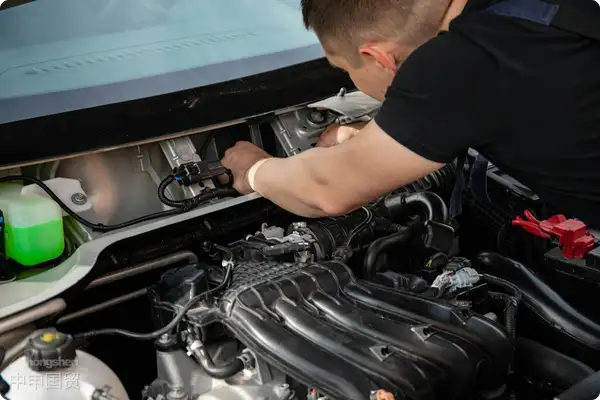- Shanghai Zhongshen International Trade Co., Ltd. - Two decades of trade agency expertise.
- Service Hotline: 139 1787 2118

Introduction
With the growth of global automotive aftermarket demand and the upgrading of the domestic auto repair industry, the scale of imported auto body parts business continues to expand. As a company with 20 years of...foreign tradeexperienceImport RepresentationService providers, we have found that compliance, supply chain efficiency, and cost optimization in the import of automotive body parts are the core issues of greatest concern to enterprises. This article will systematically analyze the key aspects of importing automotive body parts from four dimensions: market access, logistics solutions, customs clearance strategies, and risk management.
Contents
ToggleI. Core Challenges and Compliance Thresholds for Importing Automotive Body Parts
1.Certification Barriers: Differences in Market Access Globally
- China CCC Certification: Safety-related vehicle structural components (such as bumpers and door hinges) must undergo mandatory CCC certification. It is necessary to confirm in advance whether the product is included in the "Compulsory Product Certification Catalog."
- EU E-mark Certification: Lighting fixtures, reflective strips, and other accessories exported to the EU must pass EEC/ECE standard testing, with a certification cycle typically lasting 4-6 weeks.
- U.S. DOT Certification: Accessories such as glass and tires must comply with U.S. Department of Transportation regulations and require DOT markings and test reports.
Stories: In 2023, a certain client imported LED car lights from Germany but failed to apply for CCC certification in advance, resulting in the goods being detained at the port for 45 days and incurring additional storage fees and penalty costs totaling 120,000 yuan.
2.Supplier Qualification Review
- Factory audit: Prioritize suppliers certified by IATF 16949 (Automotive Quality Management System) to ensure production processes comply with standards.Automotive partsStandard.
- Intellectual Property Risk: OEM accessories require verification of the original manufacturer's authorization letter to avoid trademark infringement (e.g., unauthorized logo printing, counterfeit packaging).
II. Logistics solution design and cost optimization
1.Transportation mode selection
- Air Transportation: Suitable for high-value, urgent orders (such as custom carbon fiber accessories), but the cost is approximatelyMaritime Transportation4-6 times that of.
- Maritime Transportation: For bulk general cargo (such as metal brackets, plastic decorative panels), full container load (FCL) is the preferred shipping method. For less than container load (LCL), moisture-proof packaging must be ensured (vacuum film + desiccant is recommended).
- China-Europe Railway Express: The transit time is 30% faster than ocean shipping, with costs 50% lower than air freight, making it ideal for Eastern European orders sensitive to delivery timelines.
2.Packing and Insurance
- Loss prevention requirements: Fragile items (such as glass, sensors) must be reinforced with EPE foam and wooden crates, and the outer packaging should be marked with a "Fragile" label.
- : Require the agent to purchase liability insurance of at least 5 million yuan: It is recommended to purchase "All Risks" insurance, specifically covering concealed damage caused by vibration and compression during transportation.
III. Customs Clearance Strategy and Tax Planning
1.HS Code Classification Dispute Points
- Key Classification:
- 8708.50: Body stampings (such as fenders, hoods)
- 8708.29: Non-driving axles and parts thereof
- 8512.20: LED vehicle lights and lighting components
Note: Electronic accessories (such as parking sensors) may fall under categories 8531/8543, and their classification should be determined based on functionality.
Risk Warnings:A company mistakenly classified "rearview mirrors with cameras" under HS code 8708, when it should have been classified under 8525 (video camera category), resulting in the payment of additional tax differentials and late fees.
2.Utilization of tariff preferences
- Free trade agreement: The ASEAN Certificate of Origin (Form E) allows for zero tariffs, while the import duty rates for parts from Japan/South Korea under the RCEP agreement decrease year by year.
- Response to price review disputes: For customs-questioned "transfer pricing" transactions, it is necessary to prepare the "Royalty Fee Agreement" and the "Advance Pricing Ruling Application" in advance.
IV. Risk Management and Emergency Response Plan
1.Quality Dispute Prevention
- Third-party inspection: Commission SGS/BV or other institutions to conduct pre-shipment inspection (PSI), focusing on verifying the dimensional tolerances and surface treatment processes of the accessories.
- Claim Terms: The contract must clearly state that "quality objections must be raised within 30 days after arrival at the port" to avoid losing rights due to expiration.
2.Construction of Supply Chain Resilience
- Multi-port filing:In response to the risk of strikes at West Coast ports, proactively plan to divert cargo to the Port of Houston/Savannah.
- Safety stock: It is recommended that customers maintain a three-month inventory for long lead-time components (such as mold development parts).
Conclusion
The professionalism of automotive parts import operations is reflected in the precise control of technical regulations, supply chain nodes, and trade policies. Choosing an agency service provider with automotive industry experience can effectively mitigate compliance risks, reduce customs clearance time by over 50%, and achieve cost reduction and efficiency improvement through tax planning. For further discussion on specific project solutions, please feel free to contact our expert team for customized solutions.
Related Recommendations
? 2025. All Rights Reserved. Shanghai ICP No. 2023007705-2  PSB Record: Shanghai No.31011502009912
PSB Record: Shanghai No.31011502009912









